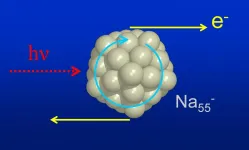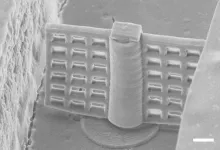"Heart disease and cancer are the leading causes of death in the United States, yet most research on financial toxicity has focused on cancer patients. It is important to consider that cancer patients may have short bursts of high expenditures for treatments, while heart disease patients are often incurring a more chronic economic burden due to drug costs, procedures, clinician visits and hospital stays," said Khurram Nasir, MD, MPH, MSc, chief of the Division of Cardiovascular Prevention and Wellness at Houston Methodist DeBakey Heart and Vascular Center and senior author of the paper. "Also, as the rate of cancer survival grows, the population of patients with both heart disease and cancer is growing. The financial burden created by these diseases manifests as another form of affliction. Without the ability to pay, our patients can suffer from financial, health and non-health related difficulties that the health care field must be prepared to address. It does very little good if we can treat the cancer or the heart disease, but the patient can't afford to eat or pay their mortgage."
Financial toxicity is defined as having any of the following: difficulty paying medical bills, inability to pay them at all, high financial distress, cost-related medication non-adherence, food insecurity, and/or delayed/foregone care due to cost.
Using data from the National Health Interview Survey from 2013-2018, researchers included 141,826 non-elderly (18 to < 65 years) adults, of which 6,887, 6,093 and 971 had cancer, atherosclerotic cardiovascular disease (ASCVD) or both, respectively. The study used a self-reported diagnosis of coronary disease, cerebrovascular disease and/or cancer. Researchers only included non-elderly adults in their main analysis to capture the population without universal financial protections from public insurance like Medicare, although similar findings were reported in the Medicare population as well.
The National Health Interview Survey is conducted by the National Center for Health Statistics/Centers for Disease Control and Prevention, and is a weighted survey, which means that it's a nationally representative survey. It contains four components: Household Composition, Family Core, Sample Child Core and Sample Adult Core. The Household Composition collects basic information and relationship information about all persons in a household. The Family Core component collects sociodemographic characteristics, basic indicators of health status, activity limitations, injuries, health insurance coverage, and access to and utilization of health care services. For the Sample Child and Sample Adult Core, one child and one adult are randomly selected to gather more detailed information. The study utilized the Sample Adult Core information with relevant information from the Household and Family Core components, which researchers supplemented with demographic and socioeconomic characteristics, health status, health care services and health-related behaviors in the U.S. adult population.
Most individuals with cancer and/or ASCVD in the study population were 40-64 years old, insured and white. Female participants were more likely to report having cancer, with a majority coming from middle-/high-income households and with a higher education level. Those reporting ASCVD, with or without cancer, were evenly distributed by sex, education and income levels but had a more unfavorable cardiovascular risk profile. The most reported cancers included non-melanoma skin, breast, cervix, prostate and "other," which was also seen among those reporting both ASCVD and cancer.
Any financial toxicity was more likely to be present in patients with both ASCVD and cancer, those with ASCVD, those with cancer and those with neither cancer nor ASCVD. Difficulty paying bills was significantly higher for ASCVD patients with and without cancer compared to patients with only cancer. Overall, the same pattern (ASCVD and cancer > ASCVD > cancer > neither) was observed for high financial distress, cost-related medication non-adherence, food insecurity and delayed/foregone medical care due to cost, when compare those reporting ASCVD with or without cancer versus cancer. Patients with both cancer and ASCVD had increased odds of experiencing any financial toxicity measured in the study. In a sub-analysis of elderly patients, the same pattern was observed for all financial toxicity measures at significantly lower rates.
"There is an urgent need for effective methods to alleviate financial toxicity for heart disease and cancer patients. In the current health system, there are already small- and large-scale strategies to identify and combat financial toxicity. This has already been observed among oncologists when prompted to talk to their patients about financial burden in the office," Nasir said. "It is especially important for clinicians who care for patients with heart disease and/or cancer, given the high economic burden facing these patients."
"The current manuscript gives us an overall picture of the economic burden suffered by patients with heart disease and/or cancer on a national level, and to tackle the two top causes of mortality in the U.S., we have to more aggressively consider the financial toxicity associated with both these diseases, and their treatment," said Javier Valero-Elizondo, MD, MPH, from the Division of Cardiovascular Prevention and Wellness at Houston Methodist DeBakey Heart and Vascular Center and lead author of the paper. "While this study is amongst the first of its kind, we hope it helps not only to build on current literature, but also serve as an idea generating paper to fight financial toxicity."
Study limitations include the self-reported nature of ASCVD and/or cancer; the limited number of financial toxicity features evaluated; and that the National Health Interview Survey assessed whether anyone in the household had financial hardship and precludes assessment of the proportion of medical bills directly related to ASCVD and/or cancer and their contribution to financial hardship. The researchers also noted it is possible strategies to mitigate financial toxicity in cancer patients have started to yield positive results, which may be reflected in the analysis.
INFORMATION:
The following JACC: CardioOncology link to the paper is available for posting in news articles and will be live after embargo: https://www.jacc.org/doi/10.1016/j.jaccao.2021.02.006
The American College of Cardiology envisions a world where innovation and knowledge optimize cardiovascular care and outcomes. As the professional home for the entire cardiovascular care team, the mission of the College and its 54,000 members is to transform cardiovascular care and to improve heart health. The ACC bestows credentials upon cardiovascular professionals who meet stringent qualifications and leads in the formation of health policy, standards and guidelines. The College also provides professional medical education, disseminates cardiovascular research through its world-renowned JACC Journals, operates national registries to measure and improve care, and offers cardiovascular accreditation to hospitals and institutions. For more, visit acc.org.
The Journal of the American College of Cardiology ranks among the top cardiovascular journals in the world for its scientific impact. JACC is the flagship for a family of journals--JACC: Cardiovascular Interventions, JACC: Cardiovascular Imaging, JACC: Heart Failure, JACC: Clinical Electrophysiology, JACC: Basic to Translational Science, JACC: Case Reports, JACC: CardioOncology and JACC: Asia--that prides themselves in publishing the top peer-reviewed research on all aspects of cardiovascular disease. Learn more at JACC.org.



